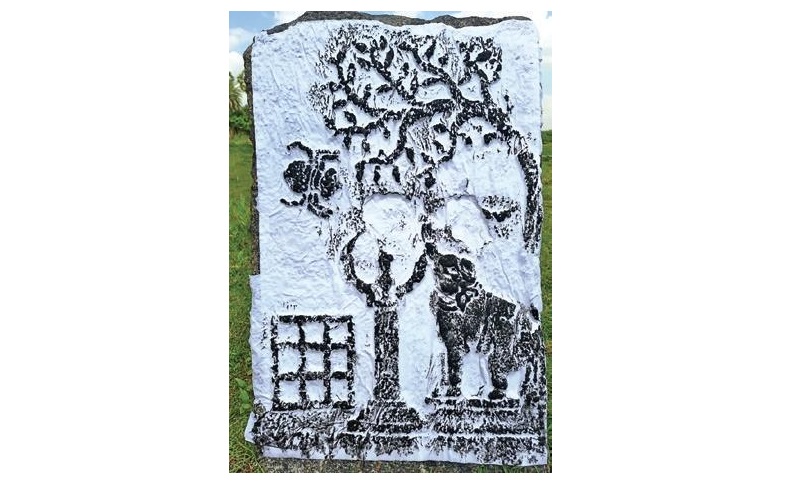
Archaeological researchers from the Tiruvannamalai Centre for Historical Research have discovered a stone inscription during an excavation at Aachamangalam near Vandavasi, which dates back to 13th century. This was found in fully intact condition and has been determined to have links to the Thiruvanaikaval Temple in Tiruchirapalli.
“It was inscribed in the 15th regnal year of Sundarapandian,” S Balamurugan, Secretary, TCHR was quoted saying in The New Indian Express. Senior epigraphist S Rajagopal studied the inscription and found that a local chieftain, Vikarapandya Sambuvarayar, gave tax relief to a fenced land located in the village and ordered that the revenue earned out of the land be used for maintaining a garden in Thiruvanaikaval temple, Balamurugan told The New Indian Express. The team consisted of Balamurugan, Palanisami, Sudhakar, and Venkatesh.
This inscription has been found to feature a spider, an elephant, a ‘Naaval Pazham’ (jambolan/jamun) tree and grilled window. All these symbols are associated with the Jambukeswarar Temple. The story goes that two of Siva’s disciples were cursed to be born as a spider and elephant in earth who worship Lord Siva in their own way. The elephant collected water from the Cauvery river to perform abhishegam while the spider built a web to protect the Siva Linga idol from dry leaves falling on it and sunlight. The elephant cleared the cobweb daily thinking that it was dust. Irked by this, the spider goes into the elephant’s trunk and bites it to death while getting killed in the process. Moved by their devotion, Lord Siva relives them from the curse and blesses them.
The main sanctum sanctorum of the temple has a stone window with 9 apertures through which devotees view the deity.
Archaeological experts are researching further about this find, as the presence of an inscription with sculpture has intrigued them.
The Thiruvanaikaval temple is a famous Shiva temple situated in Tiruchirapalli, and is famously known for being one of the five major Shiva Temples of Tamil Nadu (Pancha Bhoota Stalam) representing the Mahābhūta or five great elements; this temple represents the element of water.
Source: The New Indian Express




